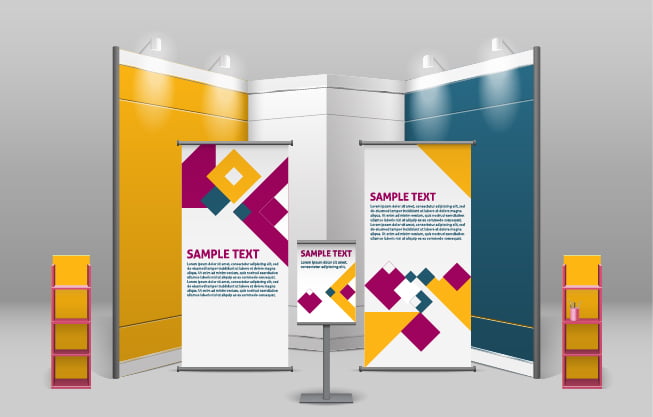Event signage refers to the various forms of visual communication used at events, such as conferences, trade shows, weddings, sports events, and festivals. These signs serve multiple purposes, from providing information and directions to creating a branded and immersive atmosphere. Here’s everything you need to know about event signage. Event signage is not only an added decoration but could be the spotlight for your event as an homage to your brand or the event’s theme.
Event signage is also important for directing guests to parking areas, helping guests make their way around the event, designating areas for staff versus guests, and so much more.
When a business hosts or sponsors an event, there is opportunity to make an impression with your brand that can be remembered beyond that day. Signage and other creative displays can bring an interactive brand experience to attendees and leave them with a long lasting impression of the event.
A theme, purpose and the types of signage to use should all be important things to consider when planning an event. How can you use signage to bring success to your brand? Here are a few ways to strategize and execute the use of signage for your next event, trade show or corporate sponsorship.
Types of Event Signage:
Directional Signs: These guide attendees to specific locations within the event venue, including registration areas, restrooms, exhibition booths, and seating areas.

Informational Signs: These convey essential information such as schedules, event rules, emergency procedures, and contact details.
Branding and Sponsorship Signs: Event organizers often use signage to display sponsor logos and promote their own brand, contributing to a cohesive event theme.
Decorative Signs: These signs add aesthetic value to the event, enhancing the overall ambiance and theme.
Materials and Printing Techniques:
Event signage can be made from various materials, including paper, vinyl, fabric, foam board, plastic, and metal.
Printing techniques range from traditional methods like screen printing and offset printing to modern digital printing for vibrant graphics and intricate designs.
Key Considerations:
Visibility: Signage must be easily visible to attendees. The choice of size, color, and placement is crucial to ensure that attendees can read and understand the information.
Consistency: Maintaining a consistent design and branding across all signage helps reinforce the event’s identity and message.
Durability: Outdoor events may require weather-resistant signage, while indoor events may benefit from reusable, easily transportable materials.
Accessibility: Ensure that signage is accessible to all attendees, including those with disabilities, by following accessibility guidelines.

Common Event Signage Examples:
Banners: Large, eye-catching banners often display event names, sponsors, or important information at entrances or key locations.
Posters: Smaller posters can be used to provide schedules, maps, or promotional materials.
Floor Graphics: Applied to the ground, these guide attendees and can also display branding.
Tabletop Signs: These are used on tables to display reserved seating, menu options, or event details.
Wayfinding Signs: These direct attendees through complex venues and are particularly important at large conferences or trade shows.
Digital Event Signage: With advancements in technology, digital screens and interactive displays are becoming increasingly popular for dynamic and real-time information updates.
Planning and Design:
Start planning your event signage early in the event planning process to ensure all necessary signs are created and placed strategically.
Consider the event’s theme, target audience, and the desired atmosphere when designing signage.
Collaborate with a graphic designer or professional printer for high-quality results.
Installation and Maintenance:
Ensure signage is installed correctly and securely to prevent accidents or damage.
Regularly inspect signage throughout the event to address any maintenance needs promptly.



